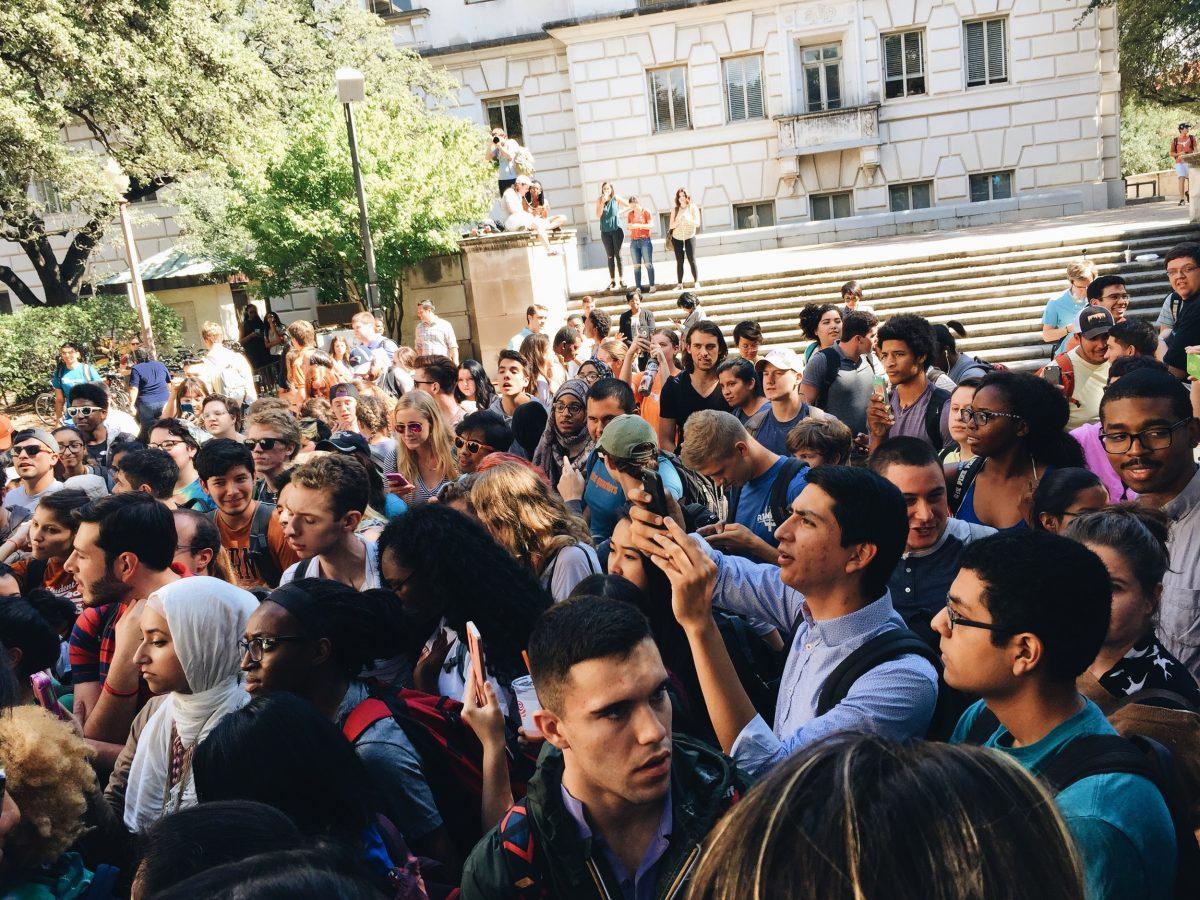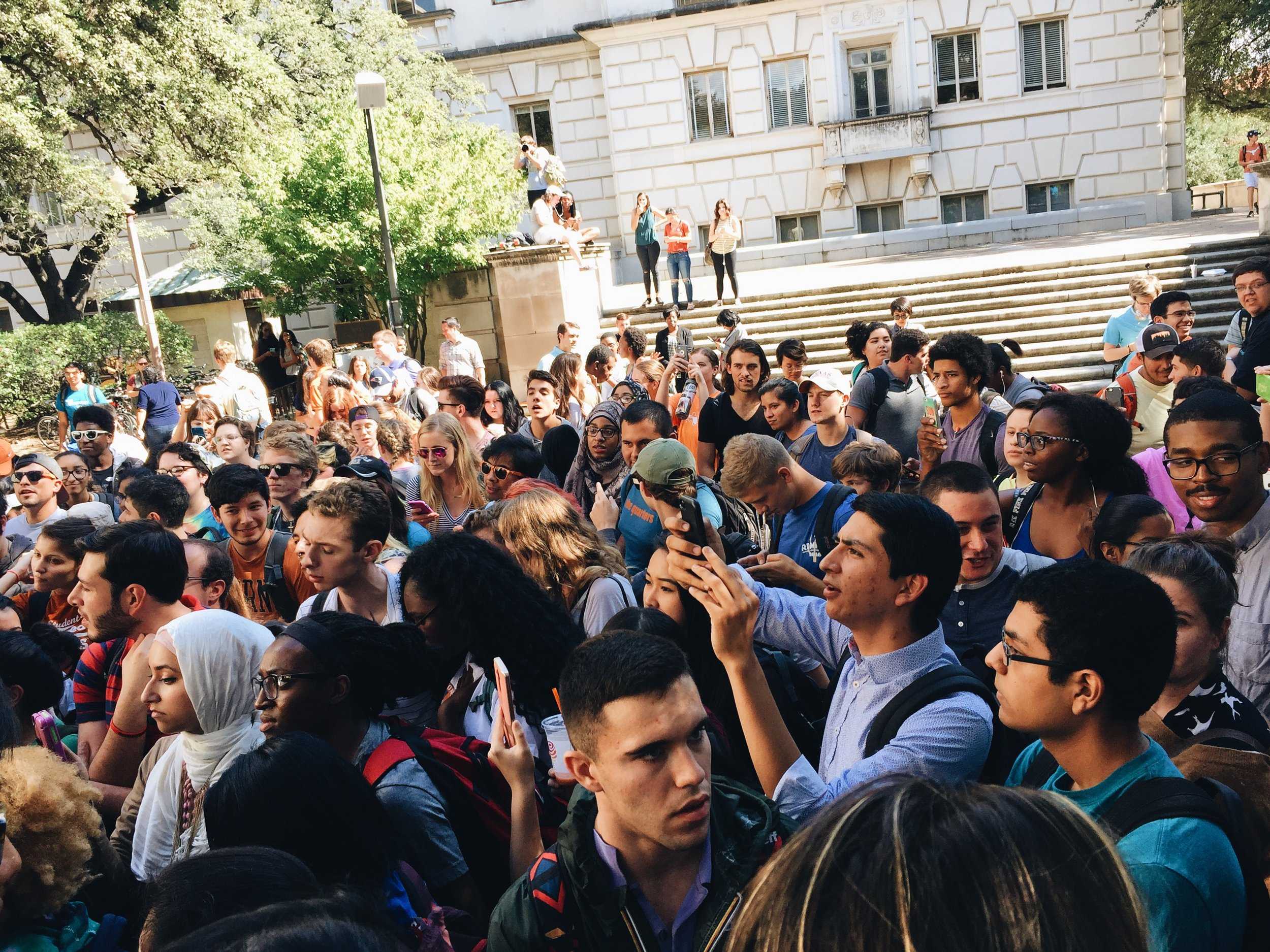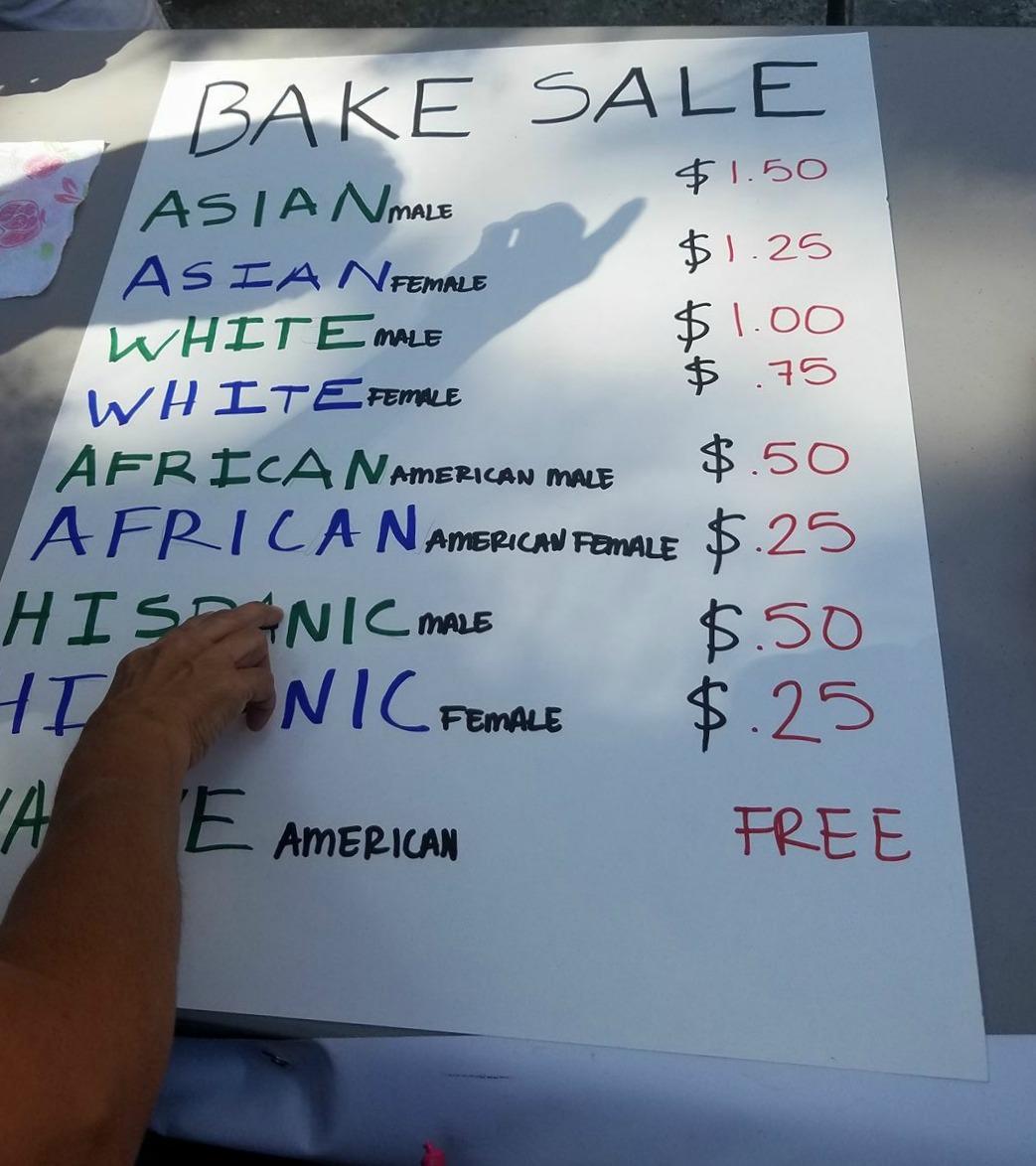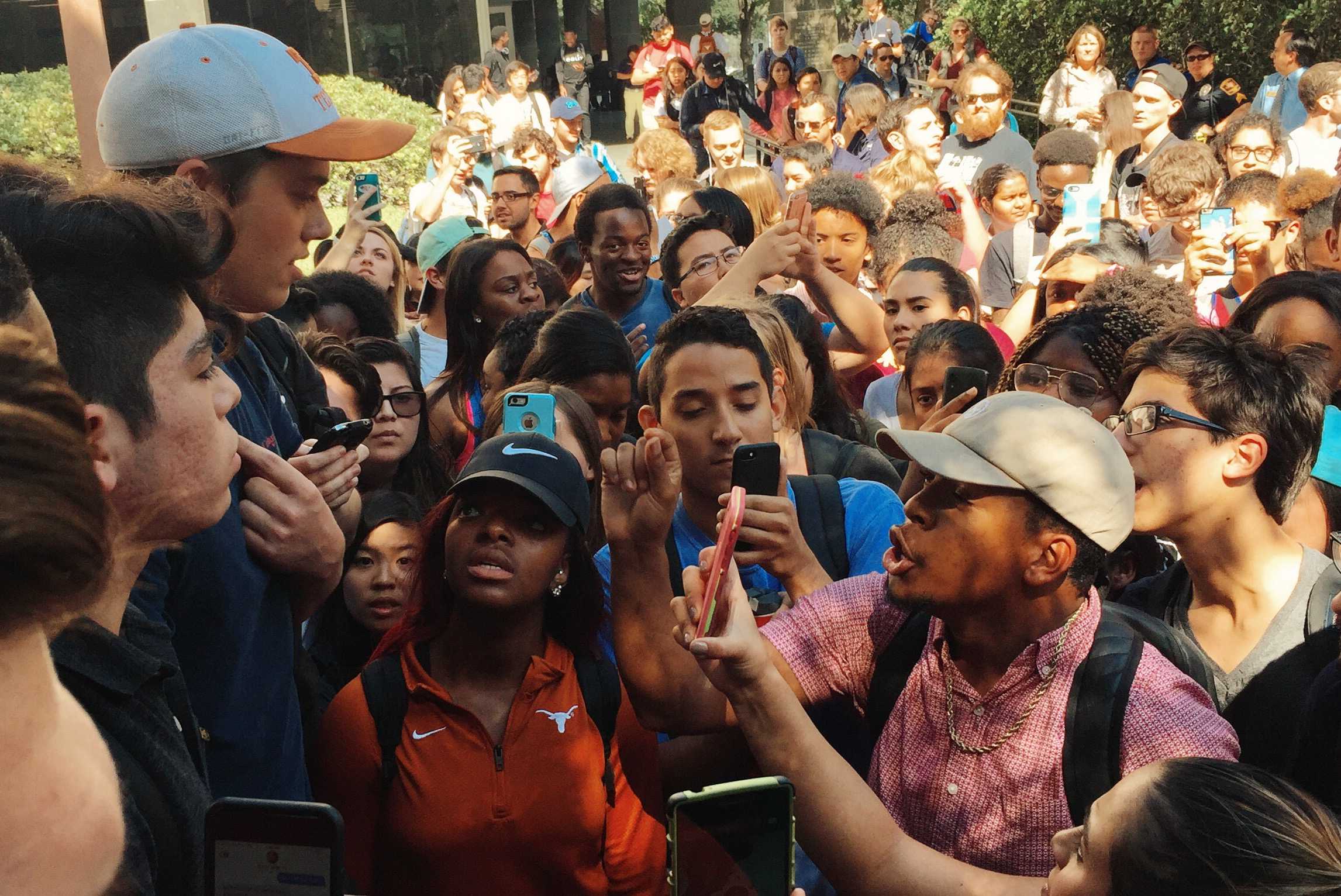Students gather near the bake sale to voice their support of affirmative action.
The University of Texas at Austin student organization, Young Conservatives of Texas, hosted a bake sale aiming to replicate the school’s use of affirmative action in its admissions process.
By Hannah McMorris
YCT members priced bake goods on a scale according to race and gender. Photo by Angela Lorena Vela Arce.
On Oct. 26, representatives from the organization set up a table in the West Mall to sell baked goods, but as students looked closer, they found the cookies were priced according to each customer’s race and gender. Asian males paid the most at $1.50, while Native Americans could take the cookie of their choosing for free.
“I think we can create a diverse and inclusive population without the use of affirmative action, but by using merit alone,” Phillip Allen, a YCT member says. “The prices are saying certain groups of people are given a higher grade or quota in the admissions process.”
Affirmative action, a set of laws and guidelines intended to address discrimination in higher education and the workplace, was first implemented at UT in 2005. Abigail Fisher, a white woman, challenged the school in a Supreme Court case, saying that she was denied admission to the university because of her race. The Supreme Court ruled in favor of the university in 2013 and again in June 2016.
UT student body president and neuroscience senior, Kevin Helgren, says his experience is enhanced by students who don’t look like him. “Affirmative action is a way to actively combat institutionalized racism that suggests people of color have less access to resources than do white, privileged people like me,” Helgren says.
The bake sale gained traction around noon, with over 100 students protesting and creating dialogue. By 1 p.m., there were no baked goods or the pricing sign, and almost all YCT members left. However, students who wanted to voice their opinions against affirmative action continued the conversation.
Electrical and computer engineering senior, Dewayne Perry, staunchly opposed affirmative action and questioned whether all students of color were fit to be at UT. “They let blacks in here with lower GPAs than white people and consequently, blacks graduate less often than whites,” Perry says. When asked if he, a black man, thought he fell into that category, he said he “may or may not be qualified to be here.”
Though Allen stated class and socioeconomic status should be taken into consideration during the admissions process, he did not believe that race should be a factor. UT student Julio Gonzalez says, “To imply that we need equity based on race and class, but that they are divorced from each other is completely missing the entire point of what they assume they’re fighting for.”
Government sophomore Joshua Ellis talks to two Young Conservatives of Texas members.
Many of the points raised by protesters centered around low minority family income and an education system that doesn’t adequately serve people of color. “We don’t get a quality education from the start. Most people in predominantly black neighborhoods are poor and they need help,” Government sophomore Joshua Ellis says. “So if I’m going to a school where they’re using 15-year-old textbooks and someone in another school is using iPads, I’m not going to get the same education.”
With chants like “racists go home,” and “stay mad at me, stay mad,” the student opinion was clear. Helgren says, “Merit is informed by the color of your skin. Your GPA is informed by your access to educational resources. Affirmative action combats that.”














































